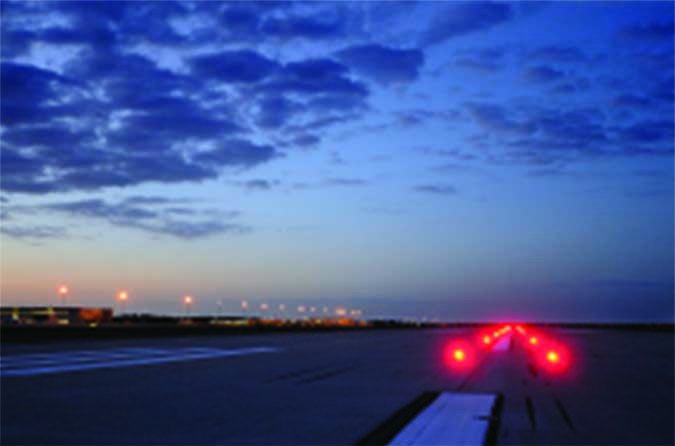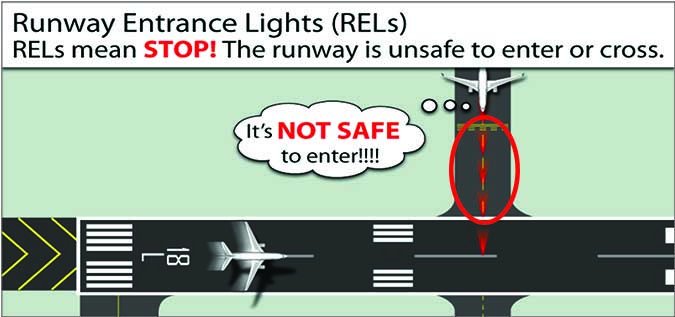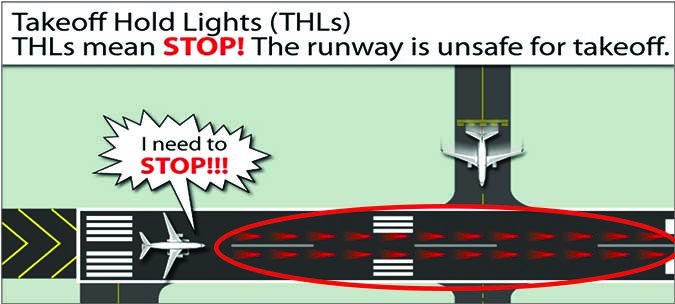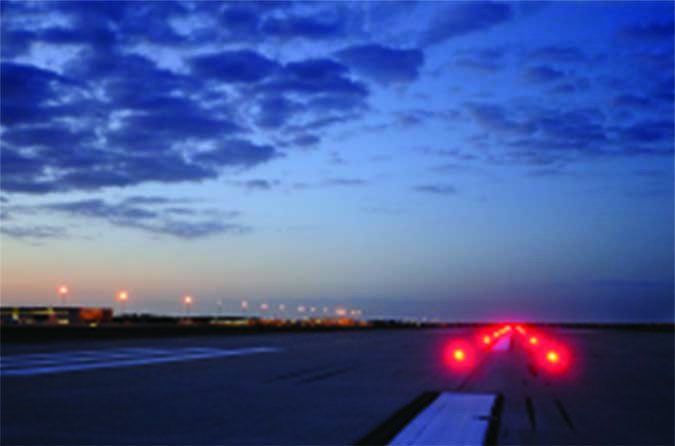The latest in the FAA’s efforts to prevent runway incursions goes into effect at the San Francisco (Calif.) International Airport (SFO) November 30. It takes the form of the Runway Status Lights (RWSL) program, an automated series of red lights embedded in taxiways that enter runways and in the departure end of runways themselves. The lights “warn pilots of high-speed aircraft or vehicles on runways,” according to the agency.
Since they are automated and independent of air traffic control, they are not a substitute for a clearance to enter or cross a runway. Instead, they’re one more tool pilots and controllers can use to minimize the risk of runway incursions. They’re either off or on: If they’re on, stop and advise ATC you are “holding for red lights.” Do not proceed beyond the lights until they’re off and you have an appropriate clearance.
The RWSL system presently consists of two configurations pictured in the diagrams below: Runway Entrance Lights (RELs) are installed at taxiways and Takeoff Hold Lights (THLs) are on runways. The RWSL lights differ from other runway/taxiway warning lights with their red color and steady illumination; other lighting systems employ flashing amber or always-on lights.
According to the FAA, the RWLS “automatically provide a clear, prompt indication of runway status directly to pilots and ground vehicle operators” and is “designed to supplement existing air traffic controller tools and procedures without increasing the controller workload.” Once again, they do not replace an ATC-issued clearance.
The systems only communicate with the FAA’s Airport Surface Detection Equipment—Model X (ASDE-X) and receive airport approach and surveillance data from ASDE-X. They “will illuminate red to serve as a warning signal for pilots and/or vehicle operators to indicate that it is unsafe to enter, cross, or begin takeoff on a runway.”
The RWSL lights are “unidirectional aluminum disc-shaped fixtures that illuminate red.” They are almost 12 inches in diameter by four inches deep and rise -inch above the pavement surface. They’re installed by boring into the runway or taxiway pavement.
In addition to SFO, the RWSL systems at least initially will be installed at 16 other airports throughout the U.S. The sidebar on this page lists those airports designated to receive an RWSL installation.
FAA On Compliance Vs. Enforcement

In a recent communication from its #FlySafe national safety campaign—a joint effort between the FAA and 16 national and international GA organizations—the agency detailed various aspects of the regulatory enforcement policy it adopted in 2015. In the event of a violation, the FAA says its policy is to “identify safety issues and correct them as effectively, quickly and efficiently as possible. Our view of compliance stresses a problem-solving approach, which includes root-cause analysis, transparency and information exchange.”
“Compliance Action” summarizes the agency’s philosophy, which it says it will use to correct “unintentional deviations that come from flawed systems and procedures, simple mistakes, lack of understanding or diminished skills. The FAA believes that these types of deviations are best corrected through root cause analysis and training, education or other appropriate improvements to procedures or training programs.”
The agency also said a Compliance Action is not a finding someone has committed a FAR violation. “Rather, it is an open and transparent exchange of safety information between you and the FAA. Its only purpose is to restore compliance and correct the underlying causes that led to the deviation. Examples of Compliance Actions include on-the-spot corrections, counseling, and additional training (including remedial training).”
In implementing this philosophy, the FAA says it will attempt to resolve any issue “with compliance tools, techniques, concepts and programs.” If the airman is qualified, willing and cooperative, the FAA will attempt to resolve the issue using the program. However, the agency cautions, “an airman who indicates that he or she is unwilling or unable to comply, or shows evidence of intentional deviation, reckless or criminal behavior, or other significant safety risk would be ineligible for Compliance Action.”
In other words, a velvet hand easily can change into an iron fist, and its oversight approach “does not mean that we’re going to go easy on compliance. The FAA will continue to use enforcement action when needed. The FAA will maintain strict accountability for inappropriate risk-taking behaviors, and will have zero tolerance for intentional or reckless behavior.”
That said, the agency said its first efforts will not include an enforcement action. Its goal “is to achieve rapid compliance, to eliminate a safety risk or deviation, and to ensure positive and permanent change.” Toward that end, the FAA seeks to create “an open, problem-solving approach to allow safety problems to be understood through proactive exchange of information and effective compliance. Through increased sharing of safety data, we can better identify emerging hazards and predict aviation risks, including many of those that may contribute or directly lead to a loss of control situation.”
Presuming cooperation and free flow of information from any airman targeted for compliance, the FAA will try to use information about the event in question as a learning experience for everyone—government and industry initiatives, courses on FAASafety.gov and support training other safety organizations provide—as well as safety forums and electronic or printed dissemination.
The FAA says such an approach to its Compliance Action “is crucial to adequately identify and address the hazards and risk in our activities.”






